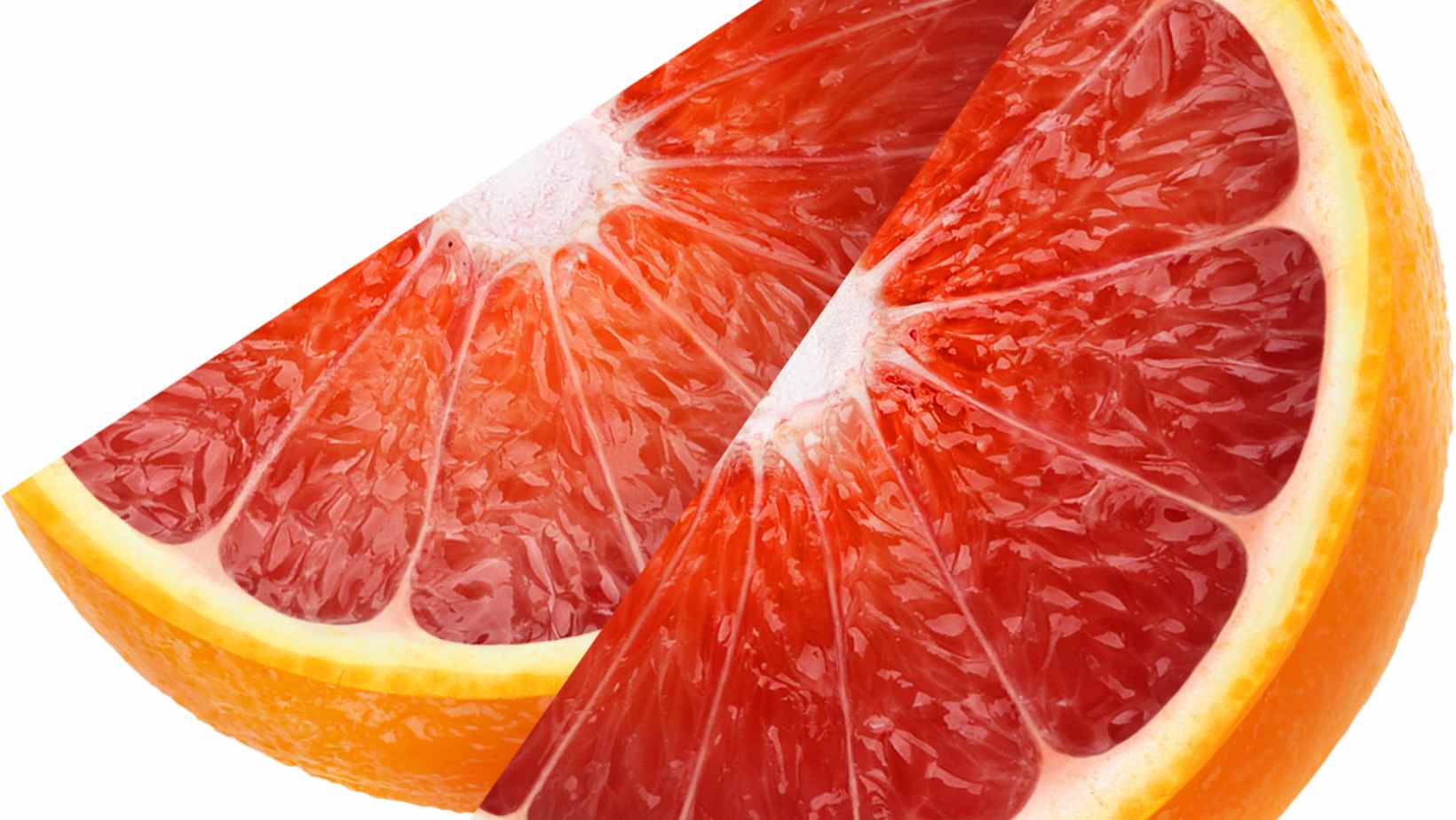
To understand the nutritional profile of blood oranges when compared to grapefruit, this section discusses the various nutrients present in blood oranges and the health benefits they offer. We will also compare blood oranges with grapefruit to help you make an informed choice.
Blood orange vs grapefruit
Blood oranges and grapefruits share many similarities, but they also differ in certain aspects. A comparison of the nutritional profile of blood oranges and grapefruits will help to elucidate these similarities and differences.
| Blood Orange (1 medium) | Grapefruit (1/2 medium) | |
| Calories | 70 | 40 |
| Total Fat (g) | 0.3 | 0.1 |
| Sodium (mg) | 0 | 0 |
| Potassium (mg) | 240 | 160 |
Blood oranges are a rich source of Vitamin C, folate, thiamine, and potassium. Grapefruits are also an excellent source of Vitamin C and fiber. However, grapefruits have a higher level of free fructose sugars than blood oranges.
Pro Tip: Incorporate both fruits into your diet for a variety of nutrients and flavors.
Who needs a daily multivitamin when you can just have a blood orange? It’s like nature’s way of saying ‘I got you, boo’.
Nutrients Present in Blood Oranges
Blood oranges possess an impressive nutritional profile that can contribute to one’s health. These citrus fruits contain a range of vitamins, minerals, and antioxidants that are vital for the body. Below are some essential nutrients present in blood oranges.
- Vitamin C: Blood oranges are rich in vitamin C, which is crucial for immune function, skin health, and wound healing.
- Folate: This nutrient promotes healthy cell growth and development and plays a vital role in pregnancy. Blood oranges are a good source of folate.
- Anthocyanins: Blood oranges get their unique color from anthocyanins, which act as powerful antioxidants that help fight inflammation and other chronic conditions.
Blood oranges also contain other nutrients such as potassium, thiamine, and fiber. One interesting fact about blood oranges is that their coloration is due to the presence of anthocyanins, which form when exposed to cold temperatures during production.
In summary, blood oranges offer numerous health benefits due to their diverse nutritional composition. By incorporating them into one’s diet regularly, one can reap the various rewards they offer.
Looking to add some color to your boring fruit routine? Blood oranges not only bring a pop of red to your plate, but also pack a punch of health benefits.

Health Benefits of Consuming Blood Oranges
Blood oranges offer various health benefits due to their impressive nutritional profile. These oranges contain high levels of antioxidants, particularly anthocyanins, which can help protect against chronic diseases. They also provide a good source of vitamin C, folate, and potassium that are beneficial for maintaining optimal health. The consumption of blood oranges may help improve cardiovascular health, strengthen the immune system, promote healthy skin and bones, as well as aid in digestion. Pro Tip: Opt for consuming whole blood oranges rather than the juice to get maximum nutritional benefits.
If life gives you blood oranges, make a culinary masterpiece out of them and impress your taste buds.
Culinary Uses of Blood Oranges
To explore the culinary uses of blood oranges and make the most out of this fruit, you can use it in a variety of ways. For drinks and cocktails, you can experiment with different flavors and combinations. When it comes to salads and desserts, blood oranges can add a refreshing taste and pop of color. Finally, in main dishes and sauces, blood oranges can provide a unique tanginess that complements other ingredients.
Use in Drinks and Cocktails
Blood Oranges – Adding a twist in your Drinks
When it comes to using blood oranges in drinks, the possibilities are endless. Here are just a few ways you can incorporate them into your cocktails and beverages:
- Make a blood orange margarita by combining tequila, lime juice, triple sec, and fresh-squeezed blood orange juice
- Add blood orange soda to your next float for a refreshing twist on the classic dessert
- Create a unique sangria with red wine, brandy, sliced citrus fruits, and of course – blood oranges
- Infuse some gin with blood orange slices for a tangy and zesty addition to your next martini
- Top off some bubbly with a splash of blood orange juice for an elegant and tasty champagne cocktail
Not only do these drinks taste delicious, but their vibrant red color adds an aesthetically pleasing touch as well. Additionally, incorporating fruits like blood oranges into cocktails can add extra vitamin C and other nutrients into your diet.
So why not add something exciting to your next drink menu by including the unique taste of blood oranges? Don’t miss out on this flavorful opportunity – give it a try today.
Who needs boring old carrots and raisins in their salad when you could have the crimson pop of blood oranges to liven things up?
Use in Salads and Desserts
Blood oranges add a unique flavor profile to cuisine, with various applications for salads and desserts. Here are some ways to incorporate them into your dishes:
- Use blood orange segments in mixed green salad for a burst of color and tangy sweetness.
- Create a blood orange vinaigrette by blending the juice with olive oil, vinegar, honey, and mustard.
- Blood oranges are great for making marmalade or jams that can be spread on toast or used as a topping for desserts.
- Poaching blood orange slices in sugar syrup elevates their natural tartness while maintaining their beautiful red hue.
While known as winter fruits, blood oranges reach their peak between December and March. Their vibrant red flesh comes from anthocyanin pigments that develop during cooler temperatures.
Blood oranges add a deliciously sinister twist to savory dishes, making every bite more thrilling than a horror movie.
Use in Main Dishes and Sauces
Blood oranges have many culinary uses, including adding flavor and color to main dishes and sauces. In fact, they’re so versatile that they can be used in both sweet and savory dishes. Here are some examples:
| Main Dishes | Sauces |
| Blood orange glazed chicken | Blood orange vinaigrette |
| Pork tenderloin with blood orange sauce | Blood orange aioli |
| Grilled fish with blood orange salsa | Blood orange gastrique |
In addition to being a flavorful addition to main dishes and sauces, blood oranges also have unique health benefits. They’re rich in vitamin C, folate, and anthocyanins, which are beneficial antioxidants. They may also offer protection against heart disease and diabetes.
Don’t miss out on the opportunity to try this tasty fruit in your cooking. Incorporating blood oranges into your meals not only adds great flavor but also gives you additional health benefits. Getting your hands on a blood orange may be tricky, but it’s worth the hunt for this crimson gem.
Availability and Selection of Blood Oranges
To get the best out of blood oranges and make the most of their health benefits, you need to know how to select and buy them. Seasonal Availability of Blood Oranges, How to Select the Best Blood Oranges, and Where to Buy Blood Oranges are the sub-sections that will help you achieve this.
Seasonal Availability of Blood Oranges
Blood oranges, a unique variety of oranges, have distinct flavors and colors. The availability of such oranges varies depending on various seasonal factors.
| Season | Availability |
| Winter | High |
| Spring | Medium |
| Summer | Low |
In the table above, we can see that blood oranges are highly available during winter seasons. During spring, their availability drops to medium levels. However, when summer approaches, blood oranges become scarce.
It is important to note that the selection of blood oranges requires a keen eye and knowledge about the fruit’s ripeness. Color alone does not indicate the fruit’s taste or quality.
Locals from Sicily refer to blood oranges as ‘arancia rossa’ and consider them a vital part of their culture. Their vibrant red color symbolizes good luck and prosperity in their tradition.
Last but not the least, one interesting tale is that blood orange originated from China and were considered imperial fruits given as gifts to royalty only. It was brought to Europe during the reigns of famous explorers who introduced it in different countries worldwide.
Get ready to slice and dice the competition with these juicy tips for selecting the perfect blood oranges.
How to Select the Best Blood Oranges
When it comes to selecting the finest Blood Oranges, there are a few things you should keep in mind. First and foremost, inspect the fruit’s exterior for signs of blemishes or discoloration. Next, feel the fruit’s weight; heavier oranges generally implies they are more mature and juicier. Finally, choose blood oranges with vibrant skin color since this indicates the high degree of anthocyanin, which is responsible for its characteristic red hue.
To help you choose the perfect Blood Orange for your needs, here is a table with appropriate columns that accurately represents what we spoke about above:
| Tips for Selecting Blood Oranges |
| Look for Blemish-Free Skin |
| Choose Heavier Fruit |
| Opt For Bright Skin Color |
It’s also crucial to keep in mind that Blood Oranges might differ in terms of sweetness and tartness depending on their variety. It is always important to smell them before purchasing as this can give you an idea about their taste.
Have you heard about Southern Italy’s cult-like devotion to Tarocco Blood Oranges? They regard these oranges as treasured jewels because of their exceptional flavor and delicate texture. Tarocco oranges demand a high price on international markets due to their unique taste and short supply period (from January to March).
If you’re feeling a little vampiric, check your local grocery store for juicy blood oranges – no neck biting required.
Where to Buy Blood Oranges
When seeking to purchase blood oranges, there are several options available in the market. Here are five key points to consider:
- Visit local farmers markets or specialty grocery stores for seasonal and fresh produce.
- Check online delivery services such as Instacart or FreshDirect, which offers 24/7 doorstep delivery within hours.
- Explore international food stores that import rare fruits and vegetables from different regions of the world, including blood oranges.
- Contact wholesalers who supply fruit to supermarkets and restaurants as they might sell in bulk or at discounted prices.
- Inquire at a nearby orchard or farm if they have blood oranges for sale or if they could direct you to another local source.
It is essential to note that the availability of blood oranges may differ based on location and seasonality since certain varieties are only grown in specific regions. Therefore, it is advisable to do research before making any purchases.
A unique fact about blood oranges is that they originated in Sicily, Italy, and are believed to be a natural mutation of sweet oranges. According to a study done by Food Chemistry Journal (2015), blood oranges contain higher levels of antioxidants than other citrus fruits due to their red pigment called anthocyanin.
Who knew a fruit named after a bodily fluid could be so healthy and tasty?
